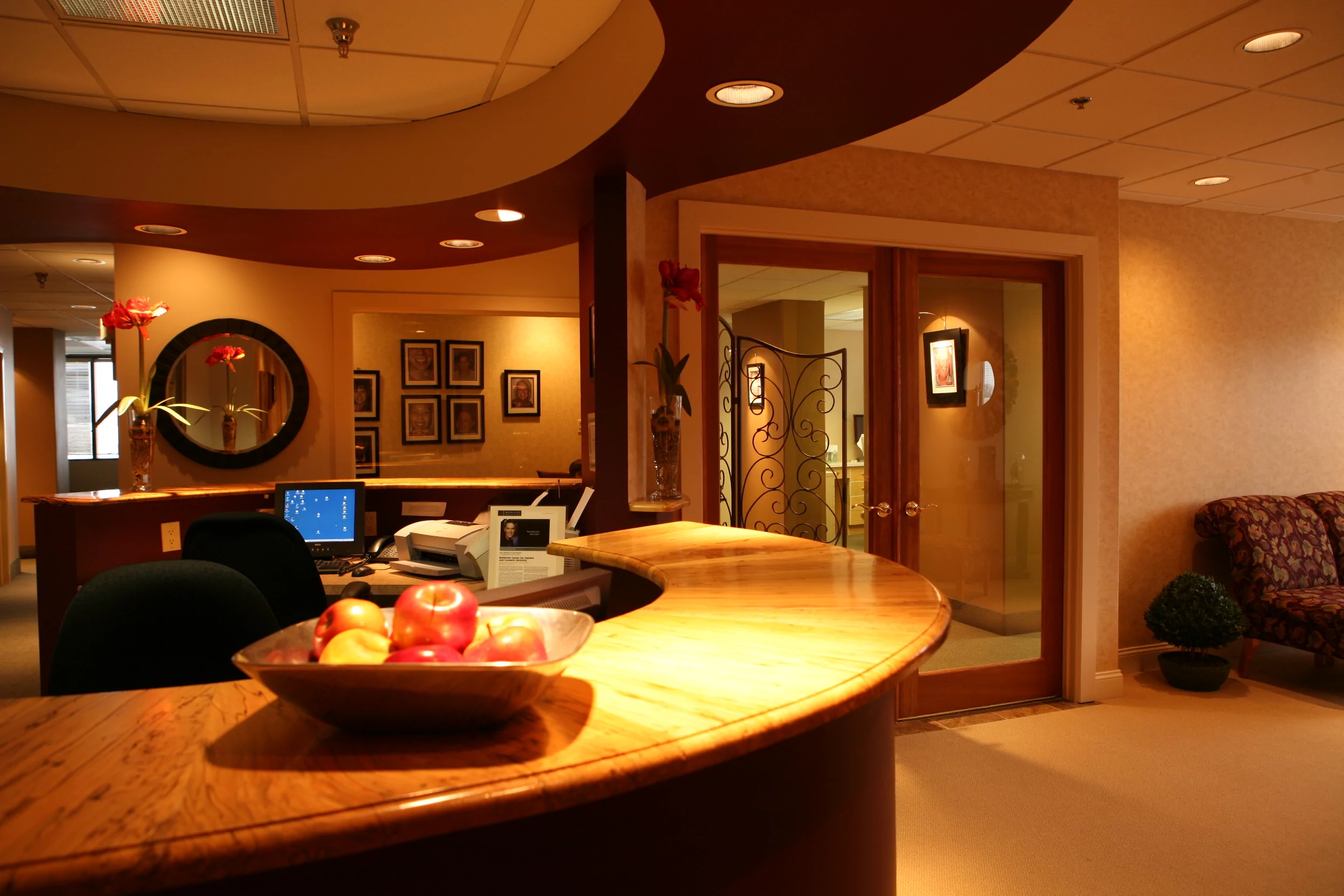Dental Implant Procedures
Dr. Steven Haywood is extremely accomplished in dental implant placement, and is a Fellow of the International Congress of Oral Implantologists. Implantology is the art and science of artificially replacing teeth with bone integrated dental anchors. There are times when a tooth can’t be saved. In this situation, the treatment plan may include an outpatient surgical procedure where a dental implant is inserted into the patient’s bone.
In this way the implant acts as a substitute for the root of the tooth. A lot of patients may ask, how long does a dental implant procedure take? In most cases it is a two-step process. Before adding an abutment to the implant, which then has a crown created and fixed to it, the implant must osseointegrate. This means it forms a bond with the bone and will increase stability enough so that you can place chewing forces on it.
The dental implant procedure timeline varies from case to case. Many factors such as the patient’s oral health, overall health, propensity to heal quickly or slowly, and others will help to determine how long the patient will wait between the dental implant procedure and the final restoration. There are also times where there may need to be bone or tissue augmentation. Absent a root, the bone doesn’t get enough stimulation and may atrophy. This is similar to when someone may have a broken leg in a cast that atrophies, again due to a lack of stimulation.
Dental implants are a specialty of Dr. Haywood and his team. He has successfully placed thousands of implants. At your consultation, Dr. Haywood will explain the dental implant procedure steps, which again will vary from patient to patient.
Most implants these days are titanium screw-like anchors with a textured surface. These characteristics help to increase osseointegration of the implant. Patients are usually treated with only a local anesthetic, however other forms of sedation are also available for your comfort. There are many sizes of implants that can be used, and sometimes multiple implants may be placed.
Dr. Steven Haywood will take a CT scan of the patient, and the treatment plan is created using digital technology. Surgical planning software allows doctors to map out the locations the implants need to be placed in advance of your actual surgery. There are also times where a dental implants procedure involves a surgical guide to precisely position the implant in even minimal bone. In these situations, the procedure may be both quicker and more accurate.
In addition to bone reconstruction, a gingival graft may be necessary at times. Healthy and strong gingiva (the solid type of gum tissue that surrounds a healthy tooth) will contribute to the stability and success of the implant. The first step however, if the hopeless tooth is still in place, is a tooth extraction. While planning, Dr. Steven Haywood will decide whether after extraction an immediate, delayed, or late placement is warranted.
Most dental implant procedures will take from 2 to 4 months from beginning to end and may include two to three visits. To patients who have received successful implant placements, it is a welcome alternative to bridgework or dentures. Dental implants are not usually recommended for smokers because they will fail at a much higher rate than with non-smokers. 98% of implant cases are, however, successful.
Functionality and aesthetics are both very important considerations with Dr. Steven Haywood when he is planning an implant case. To see a patient regain their beautiful smile is only half of the goal. When a patient is able to eat the foods they love again, they can regain oral and overall health and nutrition. Dr. Haywood’s approach to holistic dentistry assists him in seeing the entire picture. Dental implant procedure does vary from patient to patient.
But the compassion and preparation that Dr. Haywood and his staff put into each treatment plan creates an atmosphere of health and success for his patients. At The Baltimore Center for Implant and Cosmetic Dentistry, they will guide their patients through the dental implant procedure and process with care and understanding of the patient’s goals, health, and objectives.

